The majority of Seoul’s most popular tourist attractions are wheelchair accessible. See the information below concerning many of the top sights Seoul has to offer.
Namsan Cable Car & Seoul Tower
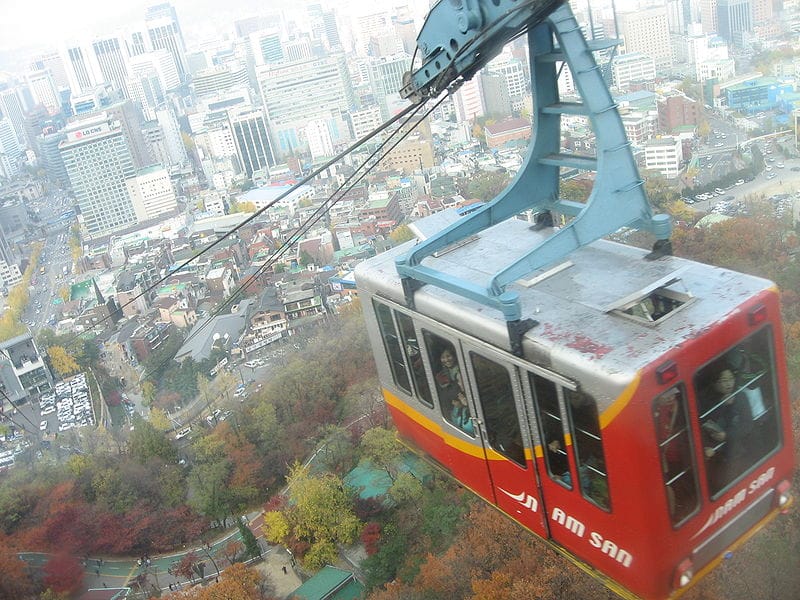
The Namsan Cable Car is Korea’s first aerial tram. It was built in 1962 to connect the Myeong-dong district with the Yejang-dong platform at the top of Namsan Mountain. Today, the Seoul Tower sits nearby the cable car’s hilltop destination. The cable car has only recently become wheelchair accessible. Wheelchair users should utilize the Namsan Orumi, a slanted elevator which departs from Namsan Tunnel 3. This elevator provides direct and accessible access to the cable car platform. Round trip cable car tickets are 8,500 KRW for adults and 5,500 KRW for seniors (age 65+). For information on the cable car, visit www.cablecar.co.kr (Korean).
The YTN Seoul Tower is a television and radio broadcast tower which transmits signals for many of Seoul’s most popular media outlets. Construction of the tower was completed in 1971. The tower is now a tourist attraction, featuring six restaurants and an observatory. The viewing platform gives visitors panoramic views of the city skyline from the highest point in Seoul. Admission to the tower’s observatory is 9,000 KRW for adults and 7,000 KRW for seniors (age 65+). Persons with a disability receive a 30% discount. For more information on the Seoul Tower, visit www.nseoultower.co.kr.
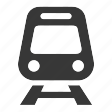
Nearest subway: 0.7 miles from Line 4 at Myeong-dong station
Myeong-dong
Myeongdong is a neighborhood district in Seoul that has become one of the city’s main shopping and tourism districts. The area began to develop as a center of business, finance and shopping following the Korean War. Half of the city’s financial district is located in Myeongdong. Citibank, AIG Korea Insurance and HSBC all maintain their headquarters’ within the neighborhood. The area is also filled with medium- to high-priced retail stores. Both local and international brands operate storefronts. Hotels, restaurants, cinemas and historic sites fill out the area. The majority of stores in Myeongdong can be accessed by wheelchairs users. Sidewalks in the area are well cared for and the streets are closed to vehicle traffic throughout the day. With more than 2 million visitors daily, pedestrians have access to and utilize the streets to move about.

Nearest subway: Line 4 at Myeong-dong station; Line 2 at Euljiro 1-ga station
Gyeongbokgung Palace
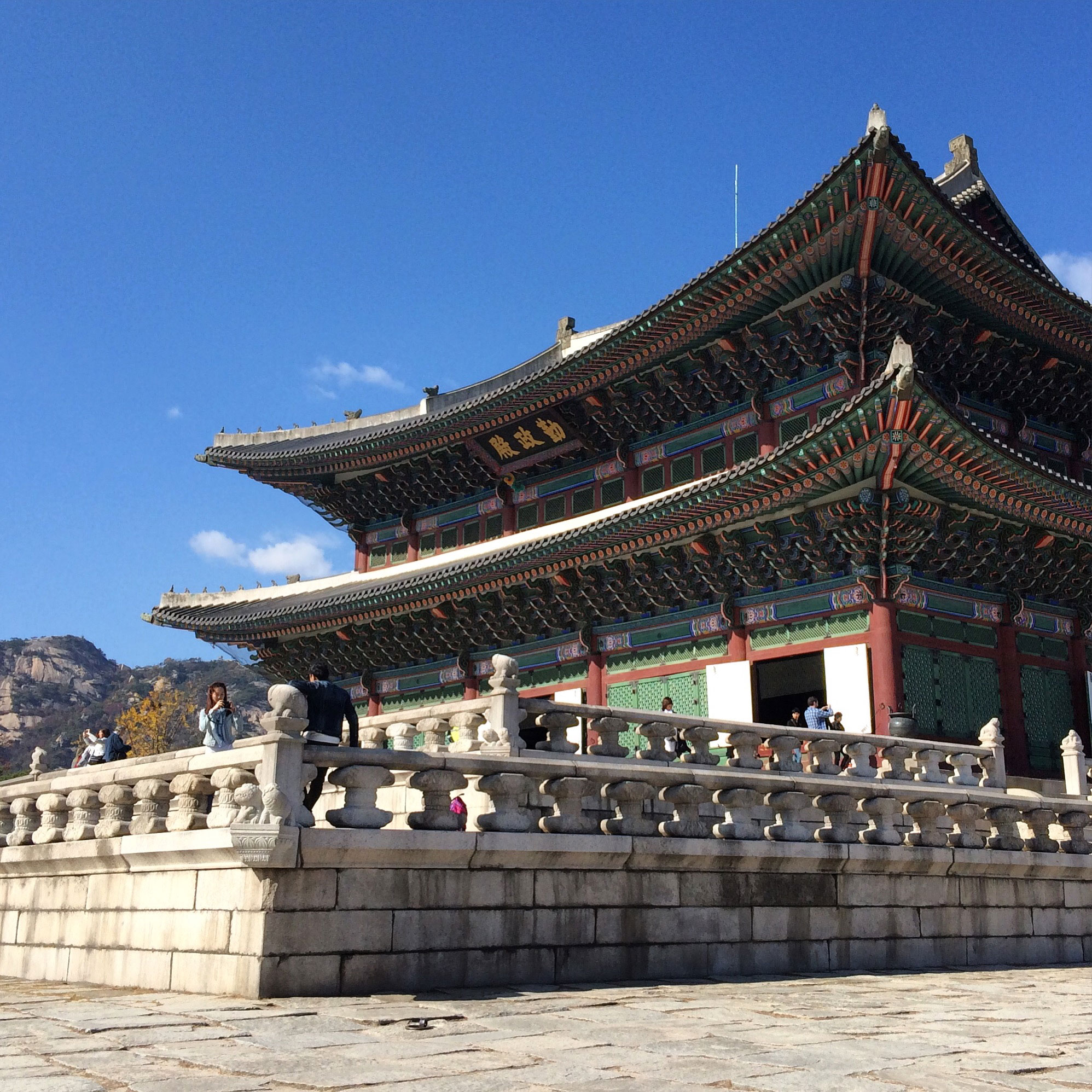
The Gyeongbokgung Palace, built in 1395, is one of Seoul’s central attractions. The palace served as the largest of the Five Grand Palaces built for the Joseon Royal Dynasty. At its height, the palace grounds held more than 500 buildings and covered 100 acres. In the early 20th century, much of the palace was destroyed by Imperial Japan. Since that time, the palace has been undergoing a process of restoration. Today, Gyeongbokgung Palace is regarded as the grandest of the historic palaces in and around Seoul. It features more than 10 truly impressive structures that were once used as the residence of the ruling dynasty. The grounds are open to the public daily. Admission for adults is priced at 3,000 KRW (~$3.00 USD). The palace grounds are remarkably accessible to wheelchair users. Ramps are available to cross steps and ledges built into the walls which run throughout the palace. Certain areas, such as the Geunjeongjeon or Throne Hall (pictured at right), are not accessible to wheelchairs because the addition of ramps would jeopardize the historic integrity of the structure. There is one courtyard made of cobblestones which is difficult to cross in a wheelchair. Despite the minor challenges present, Gyeongbokgung Palace is one of the most accessible palaces in Asia and certainly the most accessible in Korea. For more information on visiting the palace, consult the Cultural Heritage Administration of Korea website at www.jikimi.cha.go.kr. You can read my detailed accessibility review of the palace in the article, Guide to Exploring Seoul’s Gyeongbokgung Palace in a Wheelchair.

Nearest subway: Line 3 at Gyeongbokgung station
National Folk Museum of Korea
The National Folk Museum of Korea uses replicas of historical objects to illustrate the historical realities of life in Korea through the ages. The museum is located on the grounds of the Gyeongbokgung Palace. The museum has some 98,000 artifacts spread across three primary exhibition halls. The three exhibits, History of Korean People, Korean Way of Life, and Life Cycle of the Koreans reveal the history and development of Korean life, culture and national organization. Visitors will learn about the Joseon Dynasty’s rise and fall, the people’s link to Confucianism and the development of a national identity. Admission to the Folk Museum is provided free of charge to all. The museum is wheelchair accessible. For more information on the museum and its collections, visit nfm.go.kr.

Nearest subway: Line 3 at Anguk station; Line 5 at Gwanghwamun Park station
Cheonggyecheon Stream
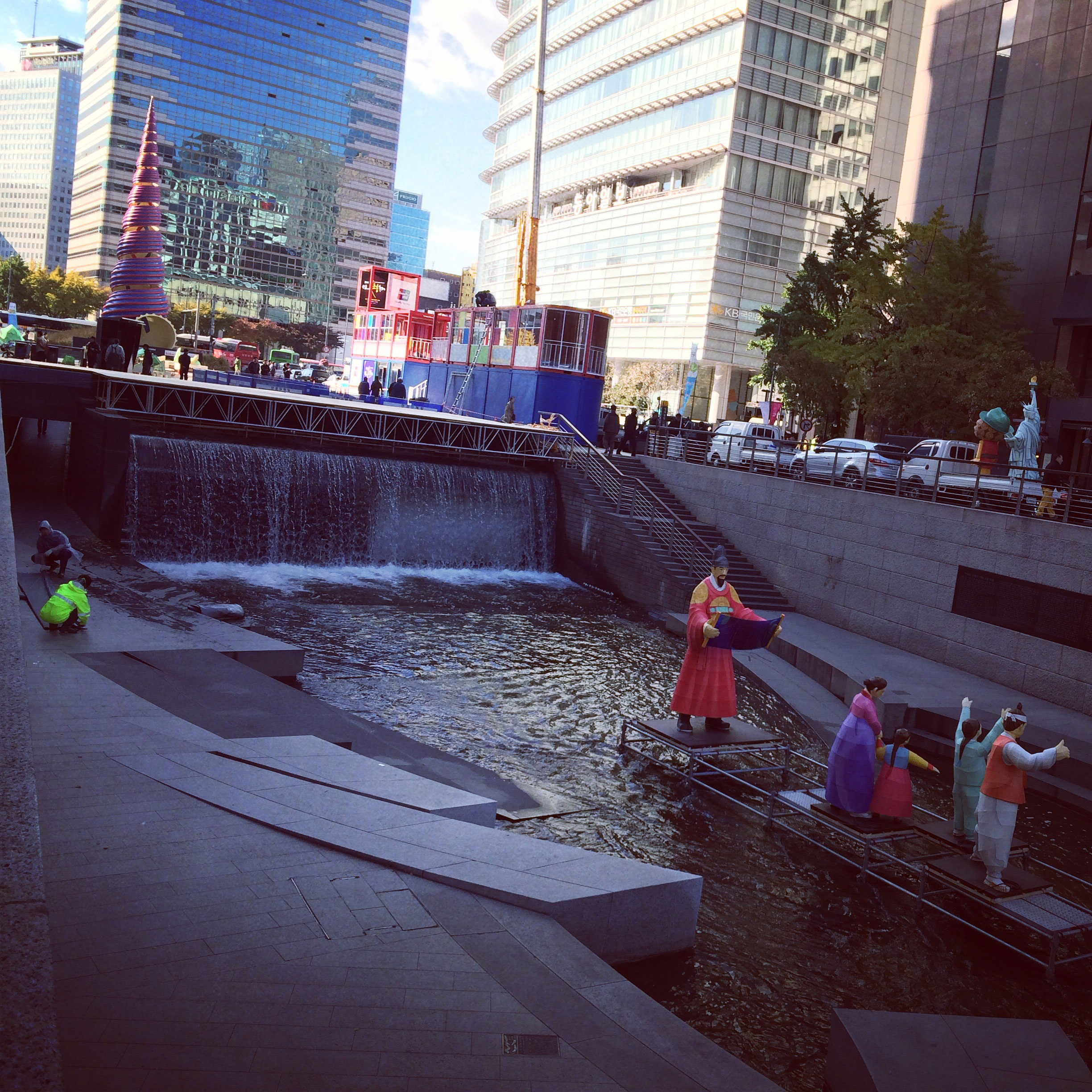
The Cheonggyecheon Stream is the center of a major urban renewal project that was constructed between 2003 and 2005. The stream was covered by cement and roadways during the development of the 1960s. In 2003, it was excavated, streets were re-routed and it has become a central piece of the downtown landscape. The stream is recessed, carved into the atmosphere of a cemented, bustling city. Along each side of the stream and below street level is a pathway which runs along its 7 mile length. The stream starts with a waterfall at Cheonggye Plaza and passes beneath numerous historic bridges on its way through and out of downtown. For a detailed guide of the notable sites along the stream, consult visitseoul.net’s walking guide. The stream and walkways are wheelchair accessible. While the majority of entrances to the below street level attraction offer only stairs, there are 9 wheelchair accessible entrances/exits which use either ramps or elevators. For a chart of the type and location of these entrances, visit the Seoul Facilities Management website at www.sisul.or.kr.

Nearest subway: 0.3 miles from Line 1 at City Hall station
National Museum of Korea
Founded in 1945, the National Museum of Korea is the preeminent history and art museum in South Korea. It moved to its current location in the Yongsan District in 2005. As of 2013, its annual attendance of 3.1 million ranked it 14th globally among art museums. The museum boasts a collection of some 310,000 pieces, with approximately 15,000 on display at any given time. The museum is divided into three floors, each representing a theme: Prehistory and Ancient History, Traditional and Religious Art, and Sculpture and Crafts. Among the items on display are pieces designated as Korean National Treasures. Admission to the museum is provided to all persons free of charge. The entire property and its exhibition halls are wheelchair accessible. Guided tours are available in a number of languages, including English. For more information, visit www.museum.go.kr.

Nearest subway: Lines 4 & Jungang at Ichon station
Seoul World Cup Stadium
Opened in 2001 in preparation for the 2002 FIFA World Cup, the Seoul World Cup Stadium is the largest football-only stadium in Asia. The stadium was built to resemble a traditional Korean kite and features architectural and design elements inspired by Korean culture. With seating for 66,806 spectators, it is the second largest stadium in Korea after Seoul Olympic Stadium. As one of the venues for the FIFA World Cup in 2002, the stadium hosted two group stage matches and a semi-final. The semi-final match was played between Germany and the host country, South Korea. The stadium is now home to the Korean National Team and also FC Seoul. For information about the professional football team or to purchase tickets, visit www.fcseoul.com. The stadium is accessible with seating space for wheelchairs.

Nearest subway: Line 6 at World Cup Stadium station; 0.7 miles to AREX at Digital Media City station
Namdaemun Gate
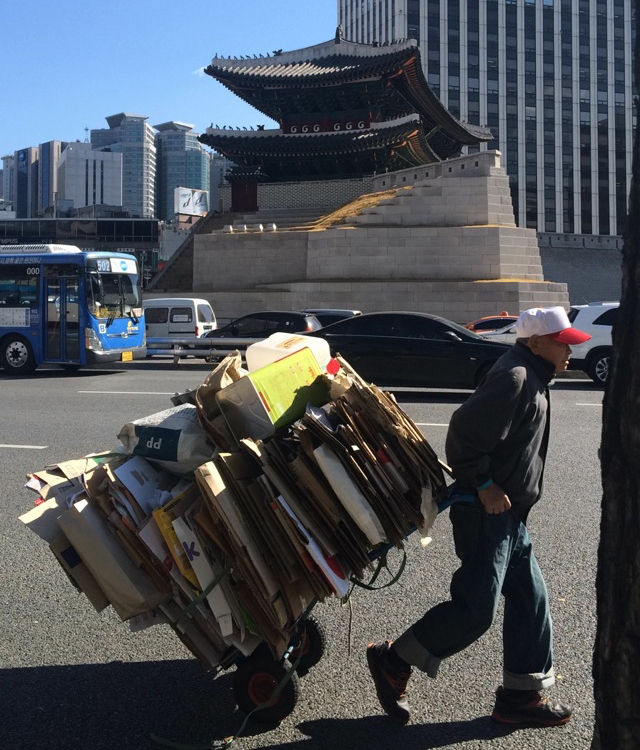
Officially known as Sungnyemun, Gate of Exalted Ceremonies, the Namdaemun Gate is designated as the first National Treasure of South Korea. It is one of the eight gates in the Fortress Wall of Seoul, which surrounded the city during the Joseon Dynasty. The gate is located between Seoul Station and Seoul Plaza. The national treasure was completed in 1398, the final year of King Taejo of Joseon’s reign. It was rebuilt in 1447 and renovated numerous times thereafter. It stood in glory until an arsonist set it afire in 2008, destroying the wooden pagoda which sits atop its stone foundation. The city wall, of which the gate was a component of, had been taken down in the early 20th century to make way for urban development. Following the 2008 fire, the gate underwent a nearly five year reconstruction. In April 2013, the gate was reopened to the public, restored to its former glory. Namdaemun Gate is free to access daily. Wheelchair users are able to roll up to the structure and pass beneath the gate which was once a major guard outpost on the wall which enclosed Seoul. While there is no wheelchair access to the pagoda at the top of the structure, the primary attraction is the gate itself and the grounds which surround it. For more information about the gate history and its hours of operation, visit the Korea Tourism Organization’s website at www.visitkorea.or.kr.

Nearest subway: 0.2 miles from Lines 1, 4 & AREX at Seoul station
War Memorial of Korea
Opened in 1994, The War Memorial of Korea was built on the former site of the country’s army headquarters. 13,000 historical pieces and artifacts are displayed in the memorial’s six exhibit halls. Each hall represents one of six different themes: Memorial Hall, War History, Korean War, Expeditionary Forces Room, ROK Armed Forces Room, and Large Equipment Room. The Memorial Hall contains the engraved names of the Korean soldiers and policemen killed in the Korean and Vietnam Wars. The memorial also has a large outdoor display area with aircraft and other military equipment. Among the aircraft present are the Antonov An-2, Boeing B-52 Stratofortress, Lockheed T-33, MiG-17 and the P-51 Mustang. Admission to the memorial is free of charge for all. For more information on the exhibits, visit www.warmemo.or.kr. The War Memorial of Korea is wheelchair accessible throughout all exhibit halls.

Nearest subway: Lines 4 & 6 at Samgakji station
